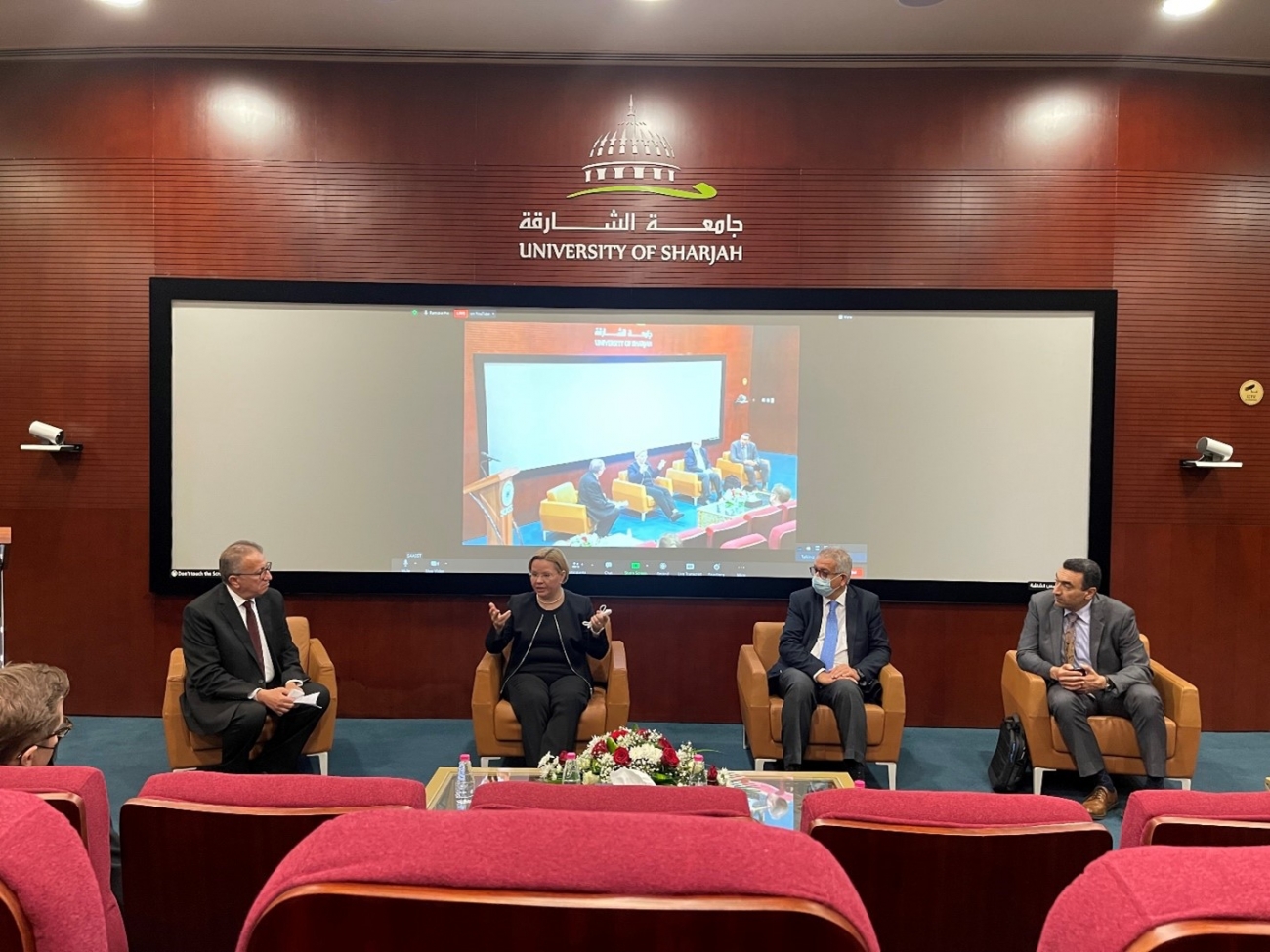Prof. Minna also presented some space weather modeling by using magnetohydrodynamics codes to understand the behavior of the sun solar charged particles in the upper ionosphere. Understanding the behavior of the solar wind is primordial for the safeguard of space infrastructures and Earth’s infrastructure. For example, everyone recalls 1989 when north Quebec lost power leaving around nine million Canadians without electricity. Therefore, understanding the behavior of these charged particles is a primary research interest for Prof. Minna.
A panel discussion followed the lecture. Prof. Ahmed Al-Shamma, the Dean of the College of Engineering, and Prof. Mashhoor Wardat, the SAASSt Deputy General, participated in this panel with Prof. Ilias Fernini, SAASST Deputy General Director for Research, being the moderator. Questions were around “What makes a space sustainable?”, “What is an example of sustainable use?”, “Why is it important to think of solutions to make space sustainable?”, “What role can the space operators play to have a sustainable use of space?”, and other subjects.
In her recent research article on Space Policy (Space Policy - Volume 57, August 2021, 101428),
Prof. Palmorth talked about “Toward Sustainable Use of Space: Economic, Technological, and Legal Perspectives.” In this work, Prof. Minna suggested the top-down and bottom-up approaches, necessitating negotiations within an intergovernmental framework and relevant space actors. What is important is that the different space operators and experts armed with their diverse backgrounds must discuss constructively and informally to realize the sustainable utilization of space in practice.
Prof. Minna Palmorth
Director of Finnish Centre of Excellence in Research of Sustainable Space



